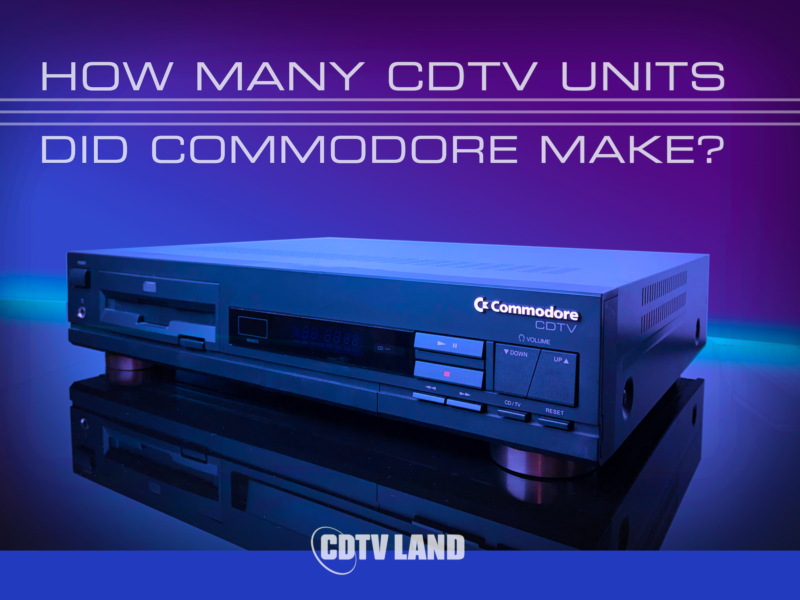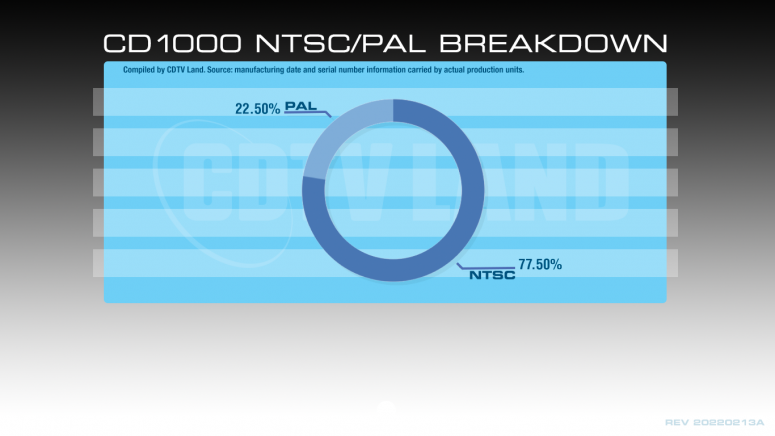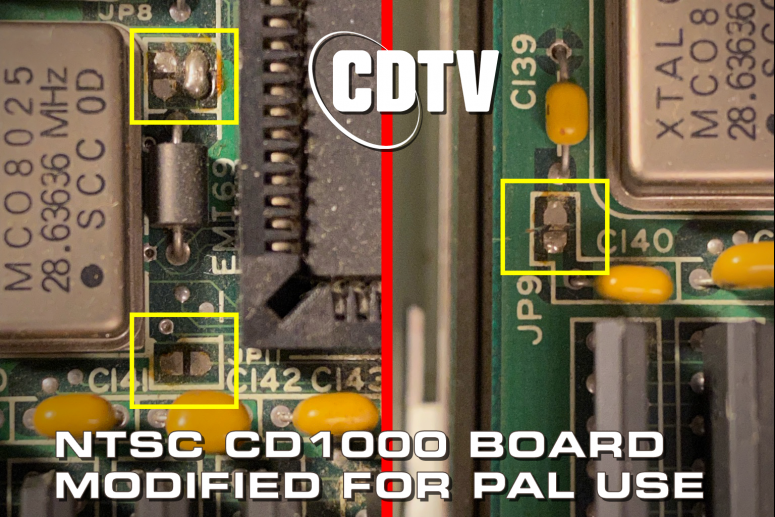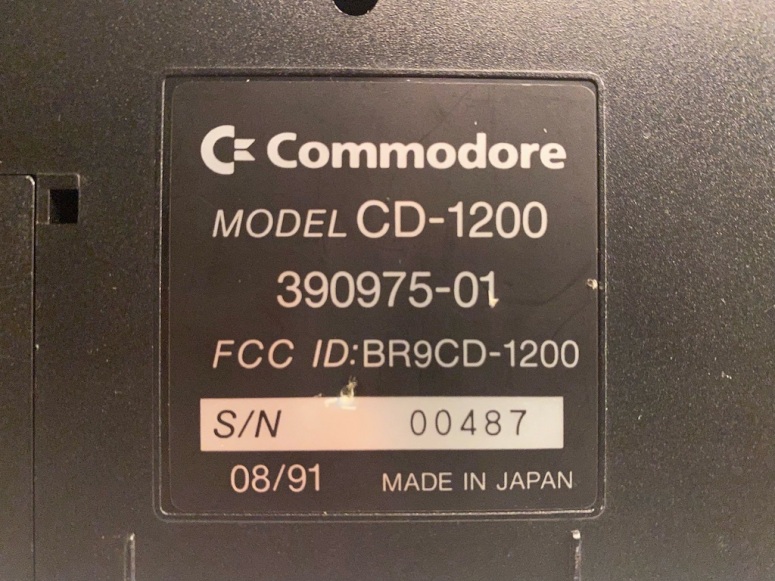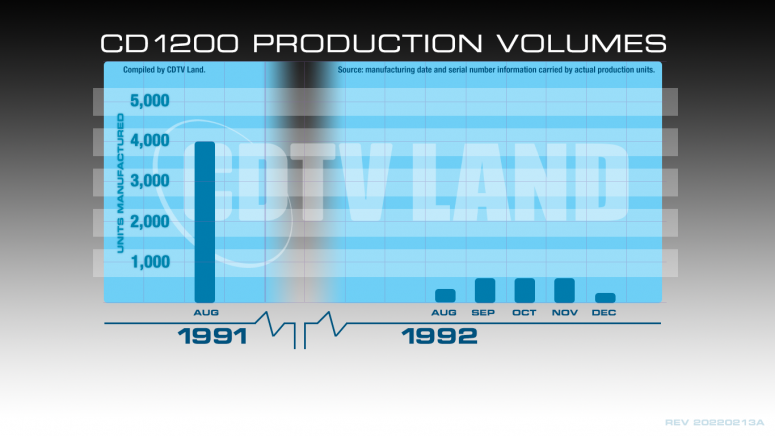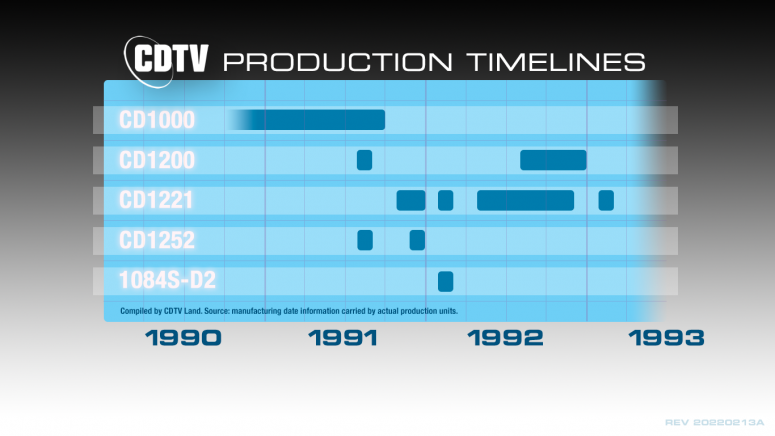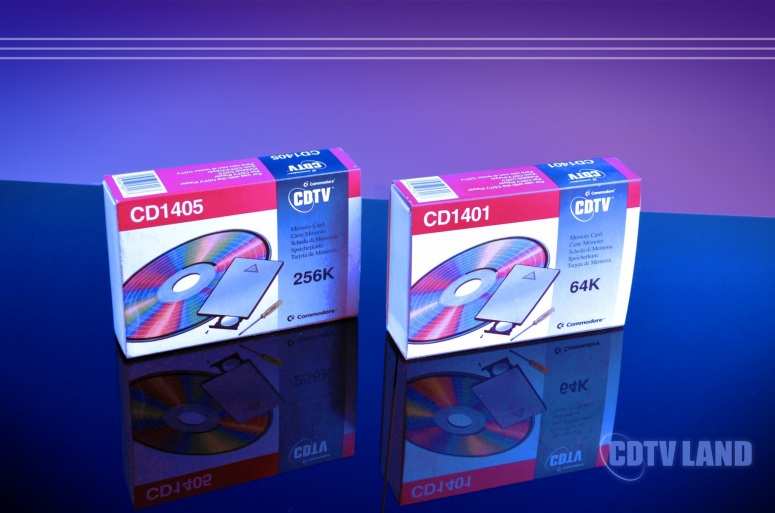
When Commodore started selling CDTV in 1991 they were hoping to kickstart a new category of consumer electronics. Sadly, this dream never materialized. While there are no hard numbers on how many units they sold in total worldwide, the estimate based on quotes from various Commodore sales subsidiaries ranges somewhere in the tens of thousands. This begs the question, how many CDTV players did Commodore actually manufacture? Join me and find out!
The only information on CDTV sales figures is a handful of quotes from Commodore sales/operational subsidiary representatives to Amiga publications of the day, which is very fuzzy data.[1] It can represent a number at a specific moment in time, a number specific to a Commodore subsidiary’s geograpical boundary, and it can be misrepresented or fudged to paint a more (or less) favorable impression depending on the source of the information.
Barring the event of official, accurate and combined worldwide CDTV sales figures turning up some day, which seems more and more unlikely as time goes on, the numbers in this article are the most accurate estimates that are publically available that I am aware of and can be independently verified by anyone by doing the same calculations that I did. Disclaimer: I am not a statistician and I don’t know what I am doing. Reliance on information in this article in life or death situations or to win arguments in bars is not recommended.
Methodology
In estimating the number of CDTV players that were manufactured, my primary source of information are the mainboard serial numbers. With a large enough dataset of serial numbers and by applying statistical principles of frequentist inference we can calculate the total number of manufactured CDTV players within a very acceptable margin of error. The mainboard serial number stickers on many Commodore products contain all sorts of interesting information besides the serial number itself like location, week and year of manufacture and/or assembly. This allows us to also say something about production volumes over periods of time. Here’s a short explanation of the elements that comprise the sticker:
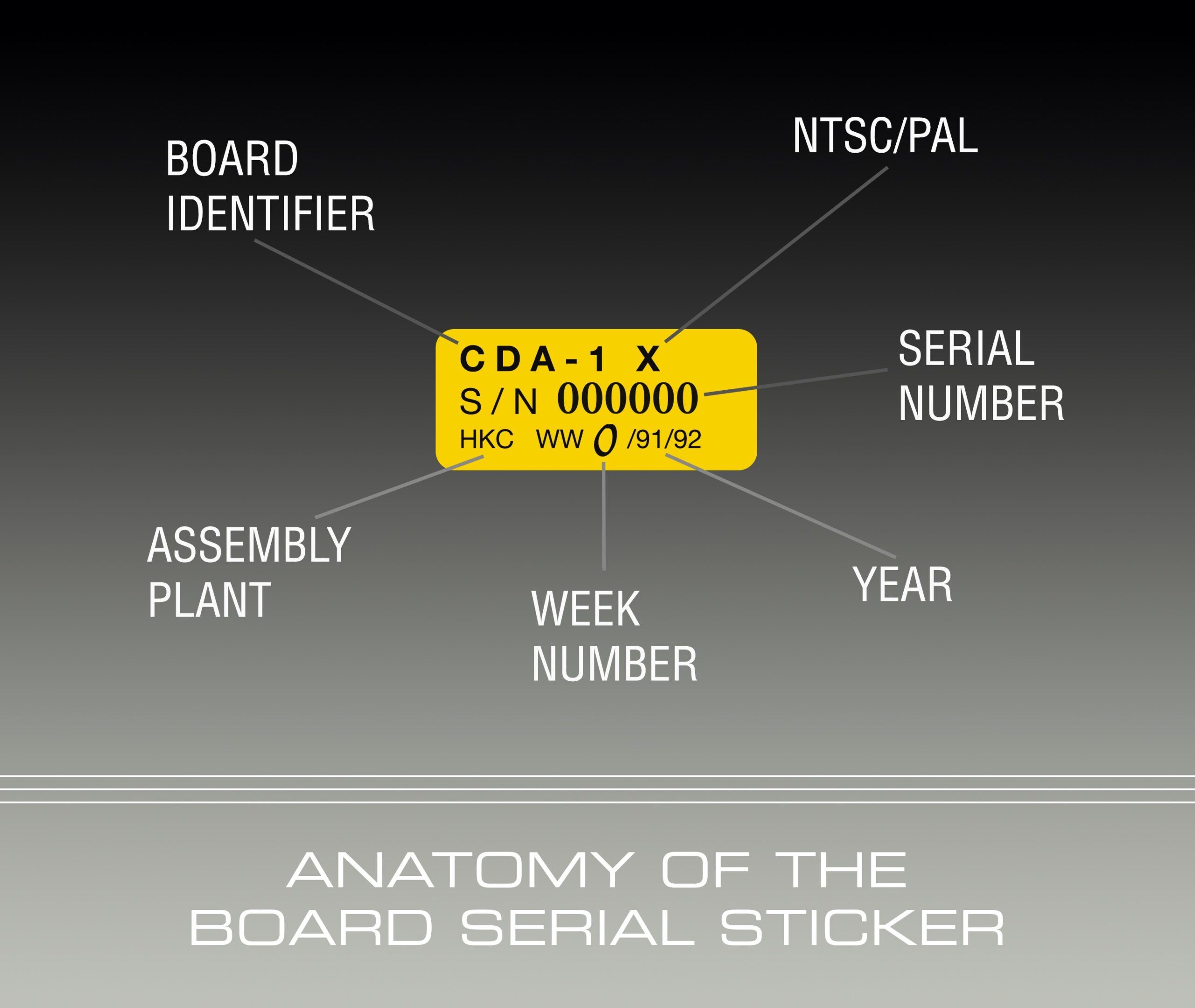
The board identifier on CDTV players says “CDA-1”, which was the original designation of the product before the product line was rebranded as “CDTV” and was designated the production model number of CD1000. [2] Right next to it is either an ‘N’ or a ‘P’, which corresponds to NTSC or PAL mainboards. [3] In the middle we have the actual serial number, while on the bottom left hand side an abbreviation of the assembly plant is visible (“Hong Kong City” in this example). Next to it there will be a week number and a crossed out year, both written manually with a pen, which tells us when this unit was manufactured.
Below is a photo of an actual CDTV mainboard serial number sticker from one of my CDTV players. As you can see, this CDTV player was manufactured in week 11 of 1991, which is between March 10th and 16th of that year! [4]

The serial number dataset that this article is based on has been collected by me over a period of 2-3 years (between late 2018 and late 2021) from places like eBay auctions, Google Image searches, and from CDTV players that I own or have owned over the years. Please note that I will be rounding the estimations up or down to thousands of units, because I don’t think it makes any sense to specify the estimate down to the last digit, due to the error margin that is inherent to this process. It would only serve to falsely suggest a certain degree of accuracy to these numbers, which is simply not there.
I have also been collecting information on CDTV peripherals during this same period, so as a little bonus I also have what I believe to be fairly accurate numbers on the number of CDTV Trackball controllers (CD1200) and CDTV monitors (1084S-D2) that were manufactured, based on their respective serial number sets. I’ll go in-depth on each of these below. Let the nerdy fun begin!
CD1000
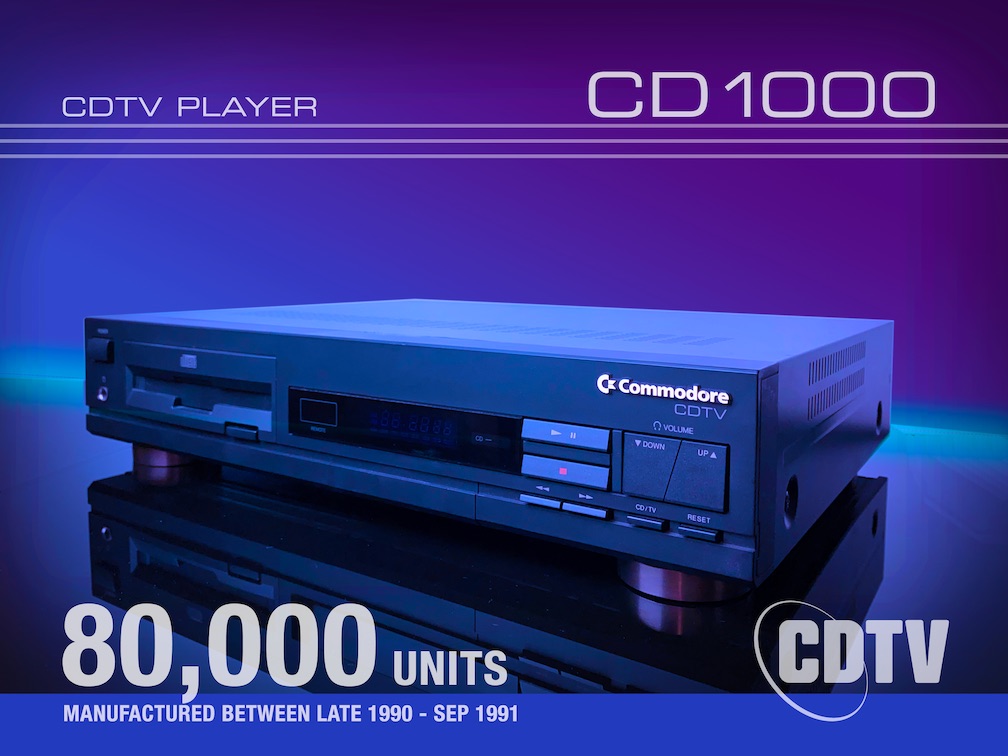
The CDTV player was manufactured for Commodore almost completely by Japanese Matsushita Electric Industrial Co., Ltd (better known as Panasonic)[5]. They manufactured the case, the mainboard and through their former subsidiary Matsushita Kotobuki Electronics Co., Ltd. (MKE) also the proprietary CD-ROM drive. Assembly of the CD1000 and quality control was done by Commodore’s Hong Kong subsidiary, Commodore Electronics (Hong Kong) Ltd., out of their Hong Kong City office. From there the assembled product was shipped to the various Commodore sales subsidiaries worldwide according to orders that they had placed with their parent company.
Based on 120 observed serial numbers we can deduce that a total of approximately 79,000 units were manufactured. I am not really sure how many units were produced during the pilot run(s) of the CD1000 model and whether those numbers are part of the observed serial number sequence, so I am comfortable with rounding that number up to a nice and even 80,000. This number actually makes sense if we look at some of the available quotes about CDTV sales worldwide (but that’s for a future article!)
NTSC/PAL Breakdown
There are two sequences of serial numbers. One for the NTSC production run and one for the PAL run. Both serial number sequences presumably start at or close to 0, with the lowest observed NTSC serial number being 257. The sequence is reset to 0 in week 30 of 1991 (July 21-27) for the start of the PAL production run. Both the highest observed NTSC serial number (60,942) and the lowest observed PAL serial number (365) fall within that very same week, which indicates that these runs were back to back.
Breakdown of NTSC vs PAL units
This means that originally approximately 61-62,000 NTSC units were manufactured, while the number of PAL units was approximately 17-18,000. I use the term “originally” here, because there is something rather shocking that I figured out regarding the NTSC vs PAL breakdown. More on that later on!
Production volumes
Production volume basically just means: how many units of a thing you manage to produce during a specific period of time. Because the serial number stickers carry week numbers, we can make some estimates about the production volumes of the CDTV player. 120 samples is not really enough for a weekly breakdown for the whole production run, so I have aggregated the serial numbers into months and that yields this interesting graph:
CD1000 production volumes
As you can see, production volume starts out relatively slowly in the beginning. By the time we get to December 1990/January 1991 we see that production volume goes up to approximately 4,000 units per month and then accelerates to 7,000/month in March and April 1991, while finally settling full blast on a steady 11,000 units a month from May 1991 until the end of production in early September 1991.
Analysis
While the oldest observed serial number (NTSC 257) is from week 35 (August 26th-September 1st) of 1990, the second oldest observed serial number is NTSC 968 and that is dated week 47 (November 18th-24th) of 1990. That means only 700 units were manufactured in the 3-month period between late August and late November 1990. (Because of the very sparse number of samples up to and including November, I have lumped the first 1,000 or so units in the chart above into November of 1990. Just be aware that these 1,000 units were manufactured throughout what was most of the second half of 1990. If I ever get more samples from this period in time, I will redo the chart to reflect that.)
This low production volume in 1990 might be related in some way to the fact that Commodore decided to delay the launch of CDTV from Christmas 1990 to February/March 1991 (the launch ultimately occurred in April 1991[6]). The delay was announced at the World of Amiga show in Chicago in October 1990 during the keynote address of (then) Commodore president Harry Copperman.[7] The primary reason given for the delay was “non-availability of supporting software”. Just what that exactly means is open to interpretation. I suspect this does not refer to CDTV titles, but rather to the system software. The software in the CDTV OS ROMs contains several modules that have been built as late as March 1991, which means development was on-going until the very last minute. I also suspect that there may have been problems with the 6500/1[8] based microcontroller which translates infrared signals to mouse/joystick and keyboard events, because the oldest chip I could find had a week code of 11/91 (which is mid-March 1991). Even all the CDTV mainboards that were manufactured in 1990 carry that date code on the 6500. If this theory is correct then Commodore were replacing buggy/faulty 6500s in manufactured CDTV players well into March 1991, just before the official launch in April 1991.
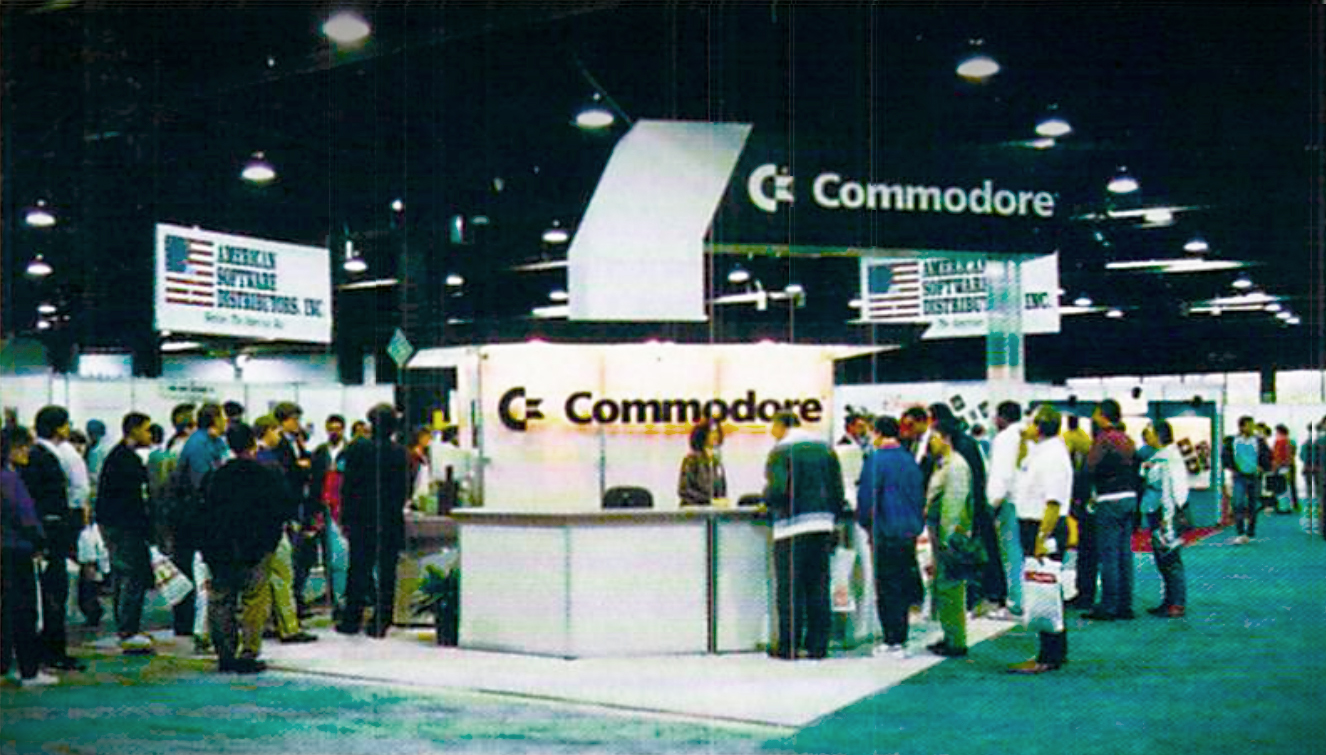
Matsushita Manufacturing Plants
As mentioned earlier, manufacturing of the CDTV player mainboards was done by Matsushita Electric Industrial Co., Ltd. This started out in one of their many manufacturing plants in their home country of Japan, but was later moved to their overseas Taiwan plant in April 1991.[9]
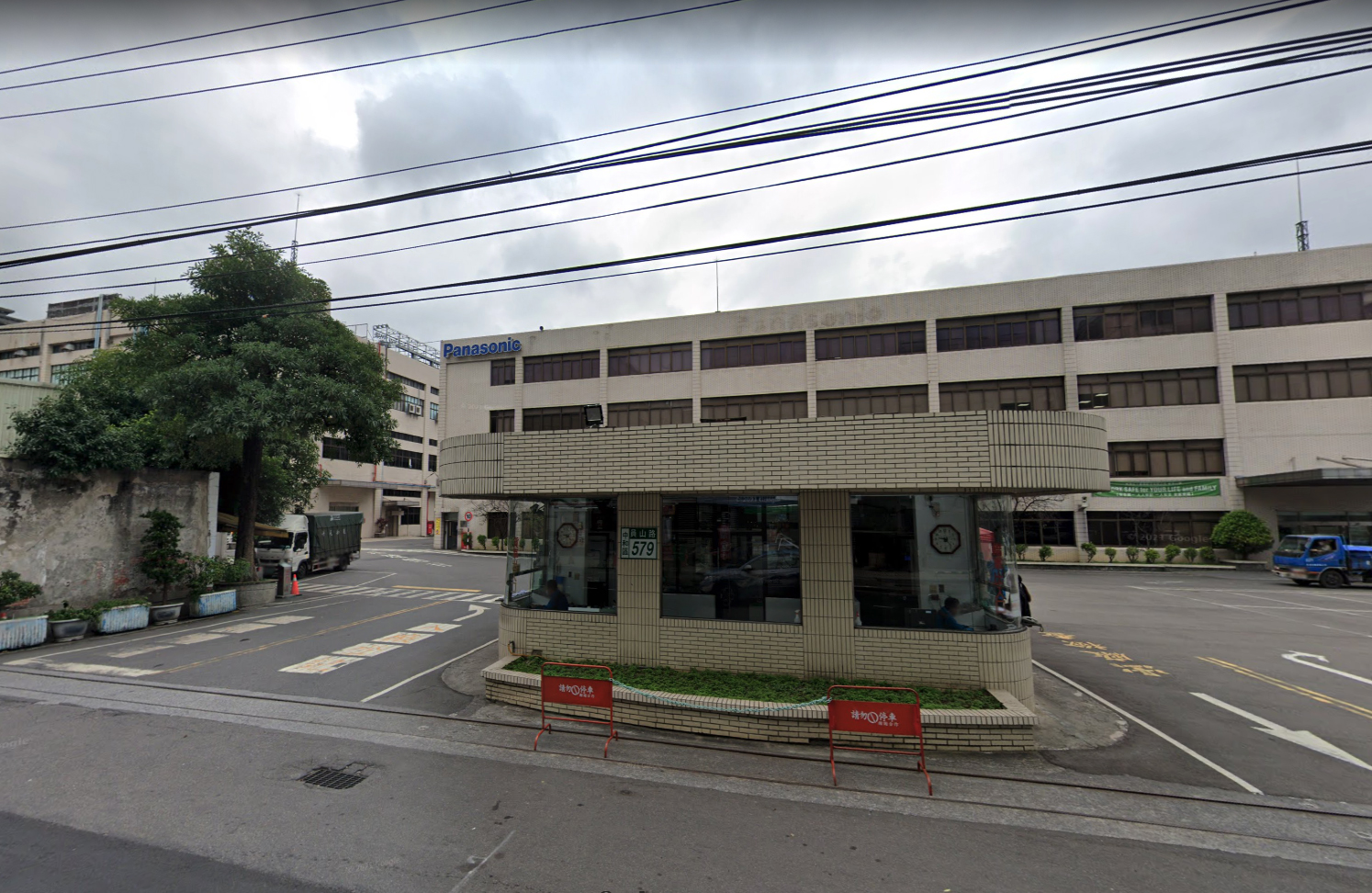
This geographical relocation of their production line seems to coincide with the introduction of a new mainboard revision (2.2.1) and a noticeable increase in production volume, because this is where we see the jump to 11,000 units per month. Approximately the first 21,000 mainboards (revision 2.2) were made in Japan, while the remainder was made in Taiwan (2.2.1). [10] The move to Taiwan can most likely be viewed as part of a broader strategy of cost reduction in the production process of the CDTV player.
NTSC to PAL Conversions
Now back to the subject of NTSC and PAL mainboards. As we have determined, originally approximately between 61,000 and 62,000 NTSC units were manufactured, while the number of PAL units is approximately between 17,000 and 18,000 units. However I believe that the overwhelming majority of NTSC units have later been repurposed by Commodore as PAL units. This can be observed by looking at the clock frequency jumper pads on the mainboard next to the crystal oscillators. These units still have an NTSC serial number sticker, but the jumper pads have been reconfigured for PAL use. It is also quite clear that the modification was done manually, when compared to the unmodified mainboards as they came from the factory! Here is an example of one of my PAL units that was originally factory built as an NTSC unit.
Example of an NTSC board converted to PAL[11]
A “real” PAL unit will have nice and clean jumper pads, as will a “real”, unmodified NTSC unit. I have come across so many modified NTSC units that I simply do not believe this was all done by end users. The sheer number of PAL units that were originally NTSC units is so great that it’s relatively rare to obtain an NTSC unit which is still in factory condition (i.e. unmodified jumper pads). Actually, most of the unmodified NTSC units that I have personally owned or own were sourced from the US, which fits very nicely with this theory.
Further support for this theory is the fact that more CDTV players have been sold in PAL territories than the total number of manufactured PAL CDTV players! Germany alone accounts for 25,800 units sold[12], while no more than 17,000-18,000 PAL units rolled off the production lines.
Unfortunately I do not have enough of a sample size to give you any meaningful ratio of converted units versus unmodified units. The fact that some end users will have converted their units will also skew this number to a certain degree, which makes it even more challenging. If I ever have more data I will try to give some sort of estimate.
This repurposing of NTSC units as PAL units supports reports that CDTV faired particularly poorly in North America.[13] My interpretation of this is that Commodore had high hopes for CDTV’s performance in the North American market. Once that market did not materialize, most of the CDTV units were converted to PAL and shipped over to Europe, where demand was most likely judged to be higher (it was not uncommon that more than 80% of Commodore’s sales revenue was generated by European subsidiaries in the early 1990s)[14].
Phew, that was a lot of information to digest. But we’re not done yet! Let’s move on to the next subject: the CDTV Transmitter, a.k.a. Trackball controller, a.k.a. CD1200!
CD1200
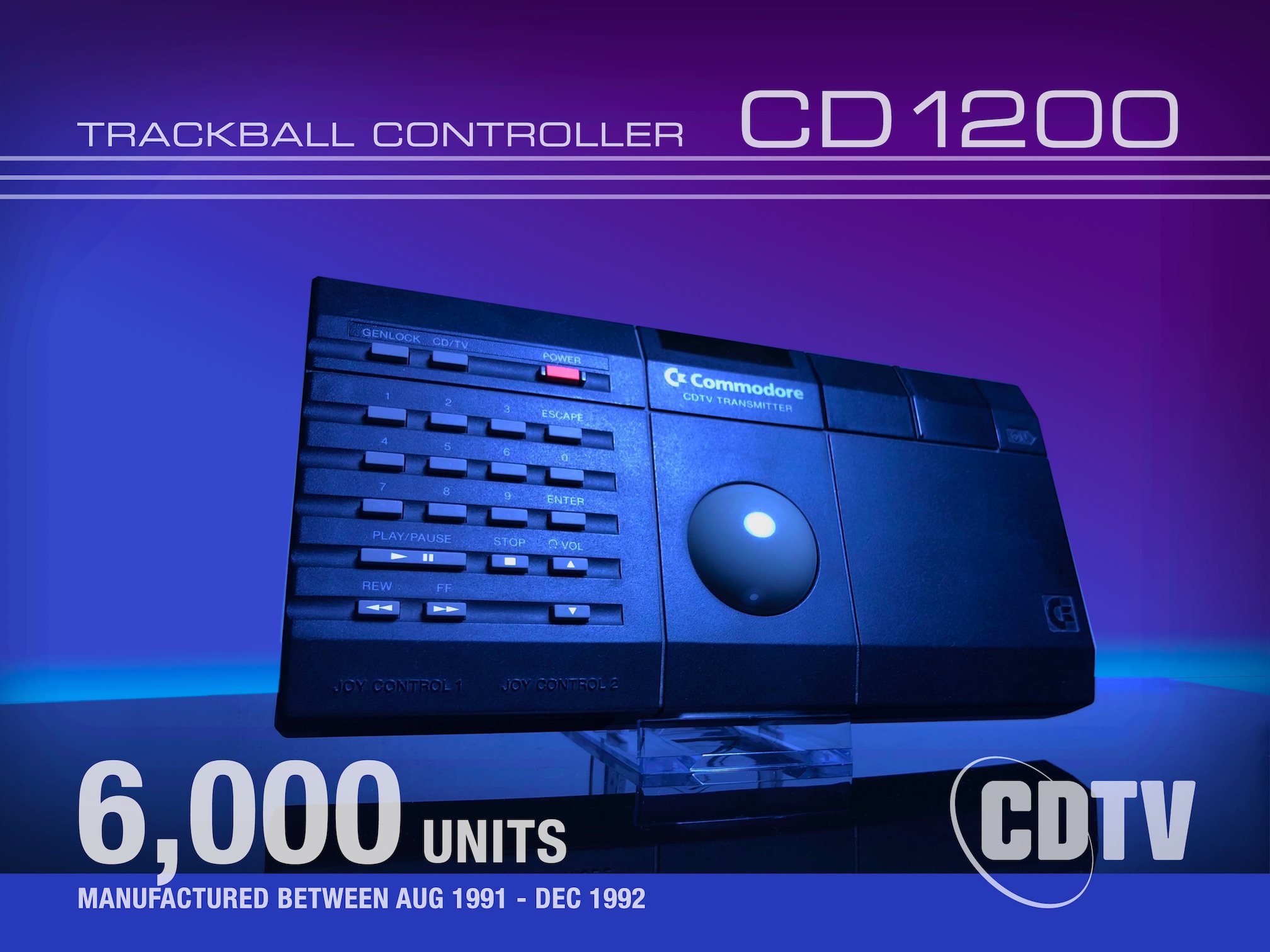
The CDTV Trackball controller was manufactured for Commodore by Japanese OEM Mitsumi Electric Co., Ltd. whom Commodore already had a business relationship with as one of their keyboard suppliers. Mitsumi is also responsible for manufacturing the standard CDTV Remote controller that shipped with every CDTV player (and many official Nintendo controllers like the NES and SNES controllers).
CD1200 serial number sticker example [15]
The serial number sticker on the back of the unit also carries the month and year of manufacture, which gives some additional insight and suggests there have been two production runs, during which a total of approximately 6,000 units were manufactured.
CD1200 Production Volumes
The first production run is the largest and occurred in August 1991. A little over 4,000 units were manufactured during that run. Then about a year later, another run of 2,000 units was commissioned, although this run is spread across multiple months with units carrying dates between August and as late as December 1992. It’s quite possible that this was not actually a single run, but multiple monthly runs based on actual market demand, because the production volume during those months is just a fraction of the first run in 1991. Of the 43 samples observed, the lowest serial number is 119 (August 1991) and the highest serial number is 6,290 (December 1992).
The relatively low total number of 6,000 units seems to support the generally accepted view that the Trackball controller is one of the rarer accessories of the CDTV product line. But if you thought that’s a low number, get ready for the next contender…
1084S-D2
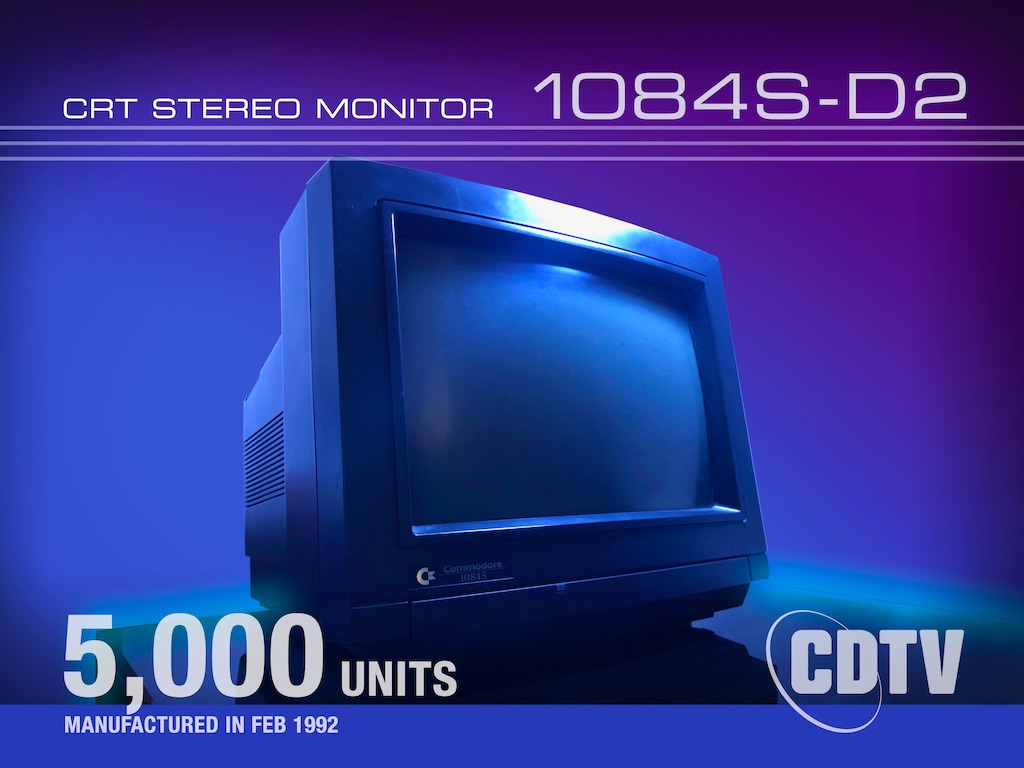
The black edition of the 1084S-D2 was manufactured for Commodore by South Korean Daewoo Electronics, which also made several other variants of the 1084 line of monitors. It is the exact same monitor as the regular beige 1084S-D2 model, apart from the case which is of course black. This special run of black monitors was ordered specifically for the CDTV line. Please note: Commodore also released a limited quantity of beige 1084S-D2 and 1084S-P1 monitors that were painted black! Those monitors are not included in this count.
The 1084S-D2 has a manufacture date and serial number on the back of the unit. Of the 18 observed samples all of them carry a manufacture date of February 1992. Serial numbers are 7 digits long, of which the first digit is probably just a prefix (other Daewoo manufactured 1084s monitors seem to have a similar serial number scheme). Taking this into account, the lowest observed serial number is 4, while the highest number is 4,705, making the rounded estimate 5,000 units manufactured.[16]
Example serial number (4229) for 1084S-D2[15]
Production timelines
So how about all the other CDTV peripherals like the keyboard, mouse and memory cards? Unfortunately they don’t carry any (unique) serial numbers, so there is no way for me to give any estimates based on actual numbers. (While the CD1221 keyboard at first glance seems to have a serial number on the back, it is in fact just the year and month of manufacture and not a unique serial number). However, even though we can’t determine the number of units manufactured, the date information on both the keyboard and the wireless mouse does allow us to say something about production timelines, i.e. which items were manufactured during which periods of time. If we put the timelines of the CD1000 (CDTV player), CD1200 (Trackball controller), 1084S-D2 (monitor), CD1221 (keyboard) and CD1252 (wireless mouse) together we get the following interesting picture.
CDTV production timelines
The pattern that immediately stands out here is that most of the peripherals that expand the CDTV player into a desktop computer were manufactured well after production of the CD1000 had already been halted. When CDTV was launched in 1991 Commodore went to great lengths to try and conceal the fact that the CDTV player was a computer. When that market did not materialize fast enough they changed course and rebranded the CD1000 as an Amiga. Suddenly it was a computer after all. The CD1000 was made available as part of the “Amiga CDTV Multimedia package”, which was announced in March 1992 at the CeBit computer expo in Hannover, Germany [18] and started becoming available at retail around mid 1992.
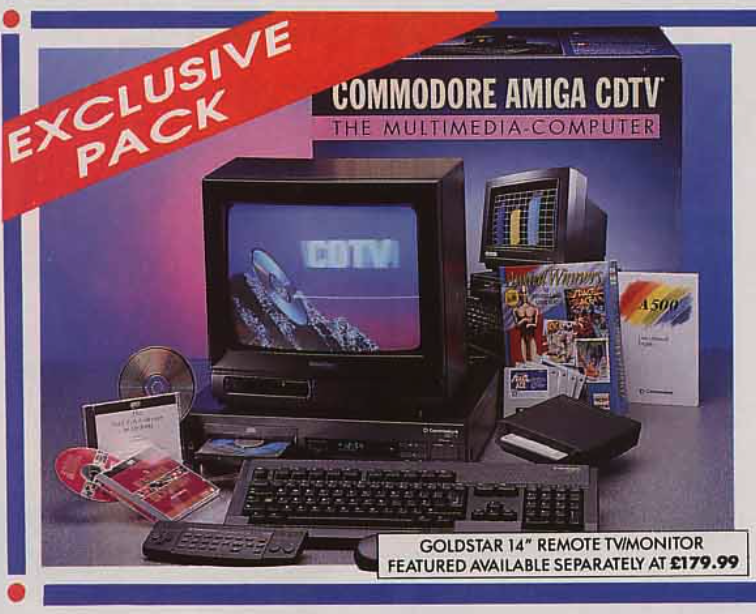
It is my opinion that at this point in time Commodore were just desperately trying to unload their vast amounts of unsold CD1000 stock onto the market without any intention of ever producing it again. As anyone with any type of experience in sales will tell you, bundling items is one of the most popular methods to get rid of dead stock, and Commodore definitely had lots of non-moving CDTV units stacked in warehouses. With 80,000 manufactured units, as we have now determined, and only 6,000 units sold in the UK by late 1991[19], (one of their best markets) and thousands of non-selling units being returned to Commodore from large US retailer chains[20] they were sitting on thousands of units of unsold stock that wasn’t moving. [21]
Just a few months later, prices of the CD1000 (both standalone and bundled with peripherals) started to plummet and the players were clearly being sold at or below cost price. (The MKE CD-ROM drive alone came at a staggering cost price of $400 US to Commodore[22] [23], while CDTV players were being sold at retail for approximately GPB 300 excluding 17.5% VAT by October 1992[24], which translates to approximately $500 US at 1991 exchange rates[25], and there are still retailer and distributor margins in that amount to account for). Commodore even ran a trade-in program where trading in your old A500 would knock 200 GBP off the multimedia pack, making the whole bundle available for 399 GBP.[26]

In July 1992, not long after the introduction of the multimedia pack, the spiritual mother of CDTV, Gail Wellington, was unceremoniously fired from Commodore[27] and around that same time internal development of the cost reduced CD-500 CDTV player model was axed by Commodore’s management.[28]
All these things put together clearly show that Commodore were done with the whole interactive multimedia thing by that time, even though they continued to paint a rosy picture to the press, consumers and retailers. They just wanted to dump their non-moving product on the market to cut their losses and move on (which they ultimately did a year later by releasing CDTV’s more focused successor: the CD32). If only Commodore knew what CDTV players and peripherals sell for right now in the 21st century on the secondary market 😉
Other peripherals
Although we don’t have any hard numbers for the other peripherals, when put into context with the numbers we now know for the CDTV player, the trackball and monitor (and using those numbers as anchors), we can at least say something about the numbers for some of the remaining peripherals.
The CDTV keyboard, disk drive and wireless/wired mouse were available to the consumer both separately but also as part of several bundles that Commodore started selling from 1992. The fact that these items were bundled with CDTV players makes me think they will have been produced in higher numbers than the higher priced non-bundled items like the trackball and monitor, so I’d be inclined to estimate their production numbers significantly higher than the trackball controller number of 6,000 units.
CDTV memory cards in retail packaging[15]
Then there’s the memory cards. Based on their extremely limited availability in the second hand market, combined with their very high retail price back in the day, I would say it’s a pretty safe bet that the production run for the 64K memory card (CD1401) is going to be similar to or even lower than the monitor number of 5,000 units and the über rare 256K memory card (CD1405) even significantly lower than that.
I’m finding it hard to make some sort of guestimate about the CD1300 and CD1301 genlocks, but I do suspect that the CD1321 SCART video module is pretty rare too and might very well be south of the monitor number as well.
In Conclusion
Wow, that was a lot of information to digest! 80,000 CDTV players, 6,000 trackballs and 5,000 monitors, NTSC CDTV units that have been repurposed as PAL units, insight into production volumes of players and peripherals and more. Although there is always some margin of error involved in estimating production numbers and volumes, I believe the estimates given here are solid and, most importantly, supported by facts and not vague quotes or hearsay. I have attempted to cite all of my sources and to clearly delineate wherever I am just theorizing or expressing an opinion.
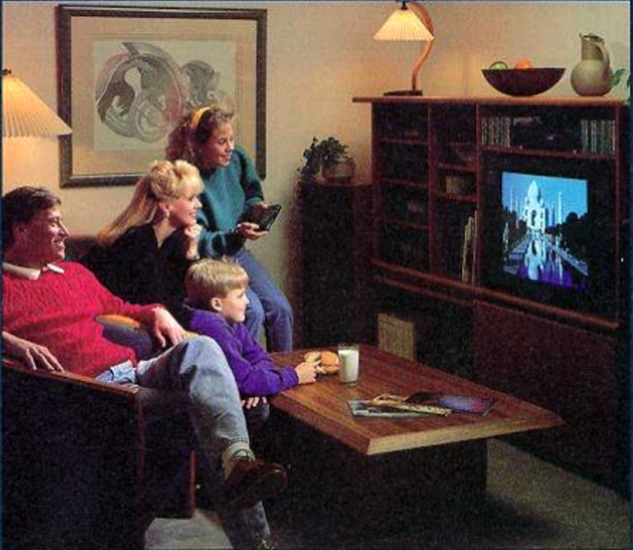
All in all, if you’ve made it reading this far (thanks!) I’m sure you’ll agree that this information adds an interesting layer of context to CDTV and its fascinating history and even opens up more questions that can be explored in the future! It represents just the tip of the iceberg of all the nerdy technical and historical information that I have gathered over the years on CDTV, so expect even more niche articles in the future here on the CDTV Land website. The only challenge for me is structuring this information into a digestable and interesting way for you the reader and in a way that I am personally satisfied with and that takes lots of time, which hopefully explains why blog posts are sometimes far and few between.
So that’s it! I hope you enjoyed reading this as much as I enjoyed putting it together. This article has been so long in the making it’s unreal and I’m happy that it is finally done. Of course, as always, I will update this article whenever new information comes to light. Thanks for reading and hope to see you back soon!
Footnotes
- The only exception is a reasonably hard number of 25,800 units sold by the German subsidiary, based on numbers from the Commodore Marketing Department in Frankfurt ↩
- CDA-1 is the name/model number of the first known CDTV player prototype. ↩
- Strictly speaking there’s not really such a thing as NTSC or PAL mainboards. There are just some jumper pads that can be used to wire the board to operate either as a 50Hz or 60Hz board. The actual encoding of the RGB video signal into broadcast standard NTSC/PAL composite video occurs inside the detachable video module in the back of the CDTV player unit. ↩
- For the whole of this article I am assuming that the week numbers on these stickers represent weeks that start on a Sunday, because that is the standard in both the US (Commodore’s home market) and in Hong Kong (which is where main assembly and QA of CDTV mainboards was done and where these stickers were most likely applied). ↩
- Source: New Computer Express, 1990 June 30 issue and Amiga Computing, 1992 January issue: “The CDTV is currently manufactured by Matsushita, Japan’s biggest electronics company” ↩
- Source: “World of Amiga Feels Pier Pressure” – Amiga World – July 1991 issue ↩
- Source: “Show Report – World of Amiga” – .Info magazine, December 1990 issue ↩
- The 6500 is labeled as 252609-02 in the CDTV player ↩
- Source: manufacture info on CD1000 mainboard PCB silkscreen print ↩
- There are later revision numbers (like 2.3), but these are probably manual modifications to the mainboard done by Commodore, for whatever reason, and not how these boards came from the supplier. These revision numbers are identified through stickers on the mainboard (the actual silkscreen print on the PCB still says 2.2 or 2.2.1). ↩
- Note: JP10 (which is not visible on this photograph), also needs to be bridged for PAL use. ↩
- Source: Commodore employee Peter Kittel, based on numbers from the Commodore Marketing Department in Frankfurt ↩
- Source: “Commodore: The Inside Story” – David Pleasance, and Amazing Computing, March 1992 issue ↩
- Source: “Commodore Net Soars on European Sales” – New York Times, Jan 30th 1990 ↩
- From my personal collection ↩
- An earlier version of this article carried an estimate of 4,000 units, because it assumed serial numbers started counting at 1,000, because no serial numbers were discovered in the 0-1,000 range. However, since then a monitor with serial number 4 has surfaced proving that assumption to be incorrect ↩
- From my personal collection ↩
- Source: “CDTV Push at CeBit” – Amiga Computing, May 1992 issue ↩
- Source: “The Year of the Compact Disc” – Amiga Format January 1992 issue ↩
- Source: “Commodore: The Inside Story” – David Pleasance ↩
- Source: Beth Richard in “Commodore: The Inside Story” – David Pleasance ↩
- Source: Jeff Porter in “Viva Amiga” interview B-roll footage. ↩
- Commodore may have gotten some discount on this figure by manufacturing as many CD1000, A570/A690 units as they did. Source: Beth Richard in “Commodore: The Inside Story” – David Pleasance ↩
- Source: Amiga Format, December 1992 issue. The cut off date for ads in that issue would have been October 27th. ↩
- Source: https://www.poundsterlinglive.com/bank-of-england-spot/historical-spot-exchange-rates/gbp/GBP-to-USD-1991 ↩
- Retail prices continued to dwindle even further, well below cost price in 1993 for both CDTV and the A570 CD-ROM drive, with the whole multimedia bundle going for as low as 229 GBP and the A570 for 99 GBP with further price dumping to follow as CD32 became more widely available. ↩
- Source: Gail Wellington in “Commodore: The Inside Story” – David Pleasance ↩
- Source: Beth Richard in “Commodore: The Inside Story” – David Pleasance ↩
- From my personal collection ↩

